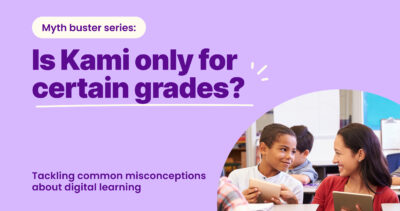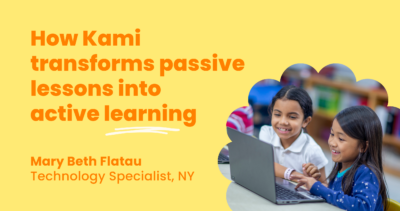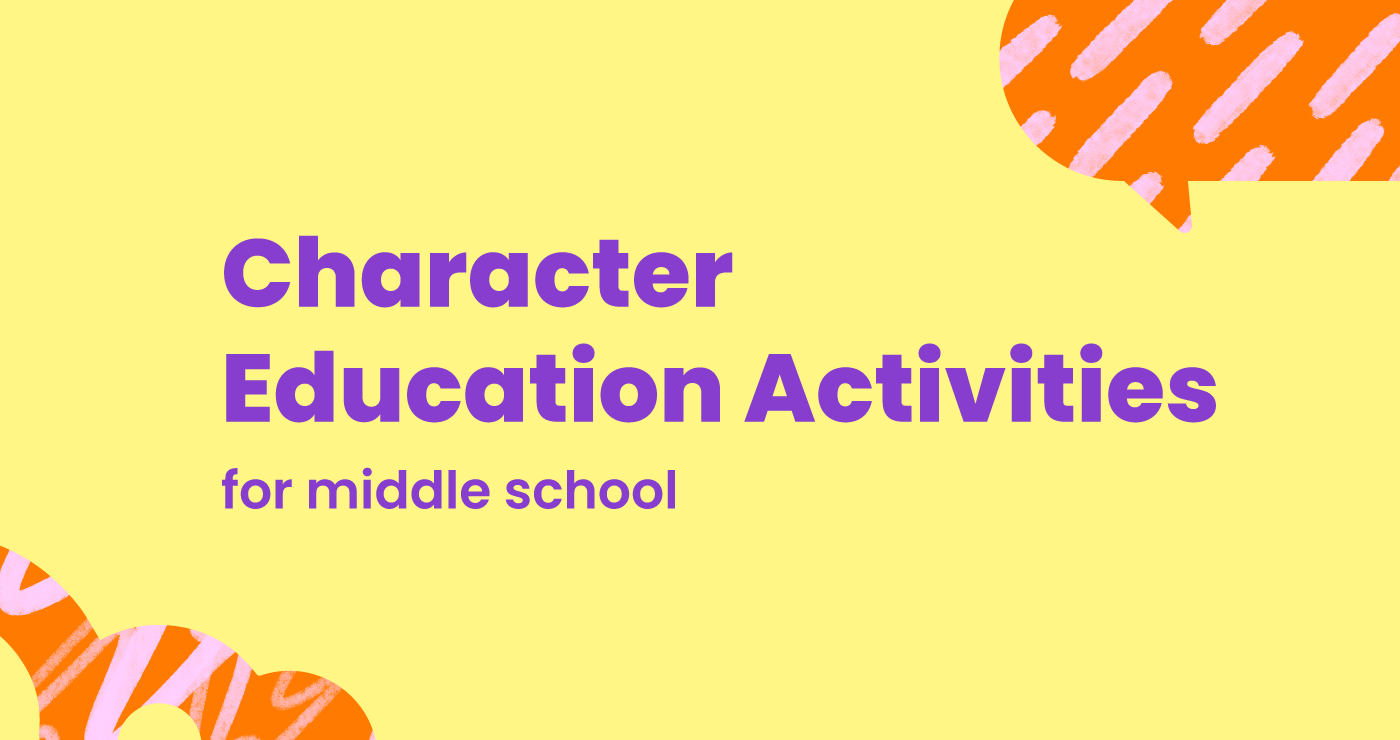Shirin Bradfield
You’ve arrived. You read “What is Character Education?” and you’ve checked out “Examples of Character Education.” now you’re looking for some activities you can implement in your character education lesson plans.
Alongside literacy, mathematics, language arts, and social studies, teaching social skills is one of the most foundational things we can be teaching our middle school students. Character education is more than just encouraging someone to return a lost wallet; it encompasses all the life skills of learning to live as a community. Remember, learners in the modern era not only have everything that their parents had to consider, but they also now each have access to social media. The potential that social media has to wreak social havoc in a school community, as we’ve seen time and time again, is massive. This is just one example of the importance of giving our learners good decision-making tools and guiding these middle schoolers under our care to do the right thing. The following is a series of character-building activities aimed at helping middle school students to develop positive character traits through social-emotional learning. With some minor adjustments, these could also work for elementary school or high school learners. Remember, you know your learners’ grade level better than anyone!
These seven interactive activities will help your learners develop good character traits such as self-discipline, trustworthiness, critical thinking, problem-solving, and a growth mindset that they can take with them into the real world.
- Change your Words: A growth mindset activity that can be used in any classroom, “Change your words… Change your mindset”. is an activity that can be undertaken by learners of any age. devise a list or create worksheets with several negative sayings. For example, “I am not good at” or “I’ll never be able to…” Students must rephrase these negative statements into positive ones, such as “I’m not good at maths, yet.” Your middle schoolers will exercise their English vocabulary skills as well as learning the power of positive thinking.
- Teach Digital Citizenship: As mentioned earlier, responsible use of social media is a vital lesson for learners. Digital citizenship is a character-building activity, which is super relevant now with social media posts, podcasts, videos, etc that students post. CommonSense.org has a great lesson plan on Digital Citizenship. Complete the free sign up and it’s all yours! The lesson plan teaches students perspective and how to be an upstander or an ally. This is especially important for older students, but given the relatively young age that students can be seen wielding smartphones, this course will benefit all learners (and probably most adults).
- Circle of Control: Self-control and self-discipline are great for all students; especially middle school-age students who often lack it! In this simple activity, they are cards with different scenarios on them. Students identify if they are in their control or out of their control. The idea is that there are certain things that are within our control and certain things that are not in our control. For example, “Whether or not Taco Bell is currently serving french fries is, unfortunately, out of my control. However, whether or not I go to Taco Bell for lunch is in my control.” This activity uses simple examples as a means of providing your learners with tools as they begin their character development.
- Random Acts of Kindness: A fun activity to do at recess or PE is making chalk messages of kindness. Teach students that a simple message can often brighten someone else’s day. You can also push students to do this outside of your class like leaving messages for others on post-its or in their community. You can extend this beyond just leaving messages. If you’re stuck for ideas, why not have your middle schoolers role-play as members of the school community they might see throughout the course of their day? Describing the ripple effect of a small good deed in the school community can show your students the kind of everyday actions they should be trying to achieve.
- Squiggly Cooperation: The squiggly line drawing is an excellent resource to teach cooperation. Learners will need to learn to work respectfully with their peers and this super easy activity will challenge them to do so. If your learners are more visually-minded, elementary students or you’re just looking for something different, try this fun drawing activity.
- Deep Breath Hand Counting: In a fast-paced world that only seems to be speeding up, there are proven benefits to taking a moment to ground ourselves during the course of our day. As adults, most of us live life at high speed. This lifestyle begins as early as elementary school. Odds are, your middle schoolers got up quickly, urged by their parents to get dressed and eat breakfast before dashing out the door. There are many useful breathing strategies you can teach your middle school students to improve their self-regulation skills. One method is counting their inhales and exhales while tracing their fingers. This technique (called hand-tracing) and several others can be found here. Combining touch and sight with breathing can help students stay focused on the action and calm themselves down. This can be a great way to start or finish a class, and literally only takes one or two minutes.
- The Forgiveness Project: a website set up to explore two philosophical principles, “Why do people forgive?” and “Forgiving the unforgivable.” Students will look at real people and their situations to see why people forgive. The lesson includes a reading, video, and student booklet with a graphic organizer. If you’re an educator, you can get access to everything the Forgiveness Project has to offer for free! You only have to sign up for their newsletter. If this seems like something that would benefit your middle schoolers, follow this link.
These character-building activities can help your middle schoolers to develop the character traits and social skills that will serve them as adults too. Introducing these at the start of the school year and supplementing them with regular class discussions will yield huge benefits for your learners, their self-esteem, and their decision-making abilities as they mature into young adults. Academic achievement will always be a vital aspect of schooling, but remember, character counts!
You may also like

Myth buster: Kami is only used by certain grades

Educator insights survey 2025

